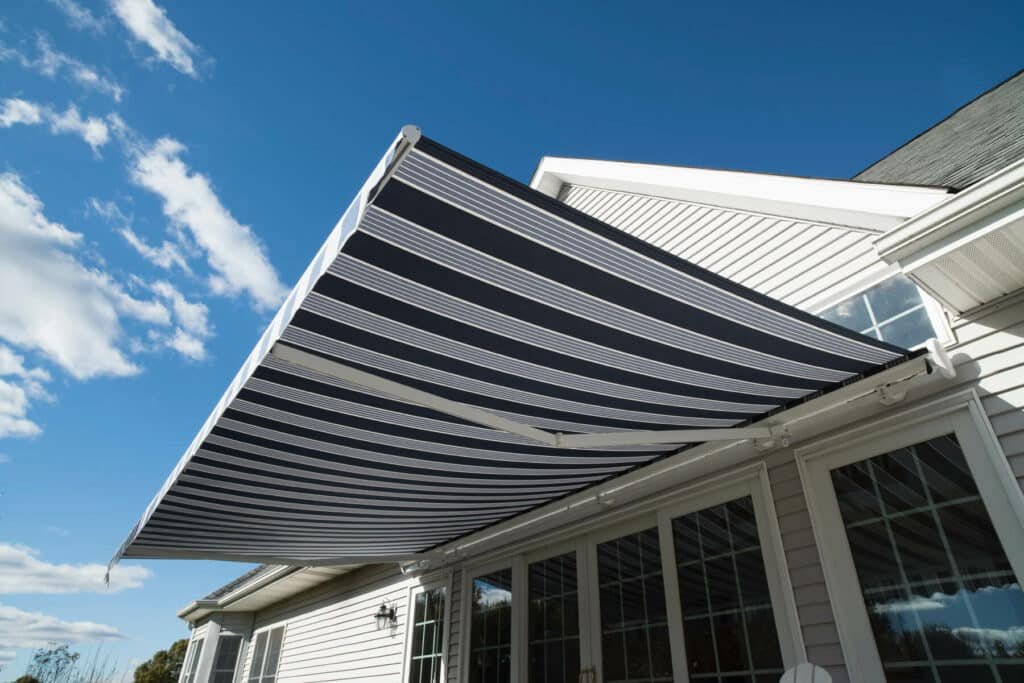In recent years, homeowners and businesses have become increasingly conscious of energy consumption and its impact on both the environment and monthly utility bills. As temperatures rise and summers become longer, finding ways to keep indoor spaces cool without cranking up the air conditioner has become a priority. Retractable awnings offer an effective solution, reducing cooling costs and enhancing energy efficiency by providing shade and minimizing heat gain inside the home. This article explores the benefits of retractable awnings for energy efficiency, supported by relevant statistics and insights on how they contribute to lower energy consumption.
How Retractable Awnings Reduce Heat Gain
Retractable awnings are installed over windows, doors, patios, or decks to provide shade and protect these areas from direct sunlight. When deployed, awnings create a shaded zone that prevents the sun’s rays from hitting the exterior surface of your home or building. This results in a significant reduction in heat gain, keeping indoor temperatures cooler and reducing the need for air conditioning.
The U.S. Department of Energy reports that window awnings can reduce solar heat gain by up to 65% on south-facing windows and 77% on west-facing windows. By blocking the sun’s rays before they enter a home, retractable awnings effectively reduce the amount of heat trapped inside, leading to lower indoor temperatures and less strain on cooling systems.
Energy Savings and Cost Benefits
The impact of retractable awnings on energy efficiency is evident in the cost savings they can provide. By reducing the amount of heat entering a home, awnings decrease the need for air conditioning, which in turn lowers energy consumption and utility bills. According to the American Society of Heating, Refrigerating and Air-Conditioning Engineers (ASHRAE), shading devices such as awnings can reduce energy use by 25% or more during peak cooling months.
For homeowners looking to cut down on their cooling costs, installing retractable awnings over windows, patios, and doors is a smart investment. Not only do awnings lower energy bills, but they also contribute to the overall comfort of the home by maintaining a cooler indoor environment without the need for constant air conditioning.
Supporting Statistics and Case Studies
Several studies have demonstrated the energy-saving potential of retractable awnings. In a study conducted by the Professional Awning Manufacturers Association (PAMA), it was found that fabric awnings and exterior shades can reduce cooling energy by as much as 50%, depending on the region and the orientation of the home. For example, homes in hotter climates such as the southern United States experienced the highest energy savings due to the significant reduction in solar heat gain.
Furthermore, a case study conducted by the California Energy Commission showed that exterior shading devices like retractable awnings could reduce peak cooling loads by up to 40% in residential buildings. This reduction not only saves money but also lessens the environmental impact of excessive energy consumption.
Enhancing Energy Efficiency with Smart Integration
Modern retractable awnings can be integrated with smart home systems, allowing homeowners to automate their use based on weather conditions, time of day, or personal preferences. By using sensors that detect sunlight, wind, or temperature changes, awnings can be automatically deployed when the sun is at its peak and retracted during overcast or windy conditions. This smart integration ensures that awnings are used efficiently to maximize energy savings without requiring manual adjustments.
Additionally, motorized retractable awnings can be controlled remotely through smartphone apps, making it convenient for homeowners to adjust their awnings even when they are not at home. This flexibility allows for optimal shading and energy efficiency, further enhancing the cooling benefits of awnings.
Choosing the Right Awnings for Energy Efficiency
To achieve the best energy efficiency results, it’s important to choose the right type and style of retractable awning for your home. Here are some factors to consider:
- Fabric Material and Color:The fabric of the awning plays a crucial role in determining how much heat and light it blocks. Light-colored fabrics reflect more sunlight and are ideal for keeping spaces cool. Look for fabrics with high UV protection ratings to ensure maximum energy savings.
- Awning Size and Placement:The size and placement of the awning will impact its effectiveness in reducing heat gain. Ensure that the awning provides adequate coverage for windows or doors and is installed at the right angle to block the most sunlight.
- Additional Features:Consider features such as adjustable pitch, motorization, and weather sensors that allow you to customize the awning’s performance based on specific energy-saving needs.
Final Thoughts: A Cost-Effective Solution for Energy Efficiency
Retractable awnings are more than just an aesthetic addition to your home—they’re a powerful tool for enhancing energy efficiency and reducing cooling costs. By blocking direct sunlight, awnings reduce heat gain and minimize the need for air conditioning, resulting in lower energy consumption and significant cost savings. For homeowners looking to create a more comfortable indoor environment while cutting down on energy expenses, installing retractable awnings is a step in the right direction.
If you’re considering adding retractable awnings to your home or business, explore the various options available to find the perfect fit for your energy-saving goals. With the right awning, you can enjoy a cooler, more energy-efficient living space year-round.



